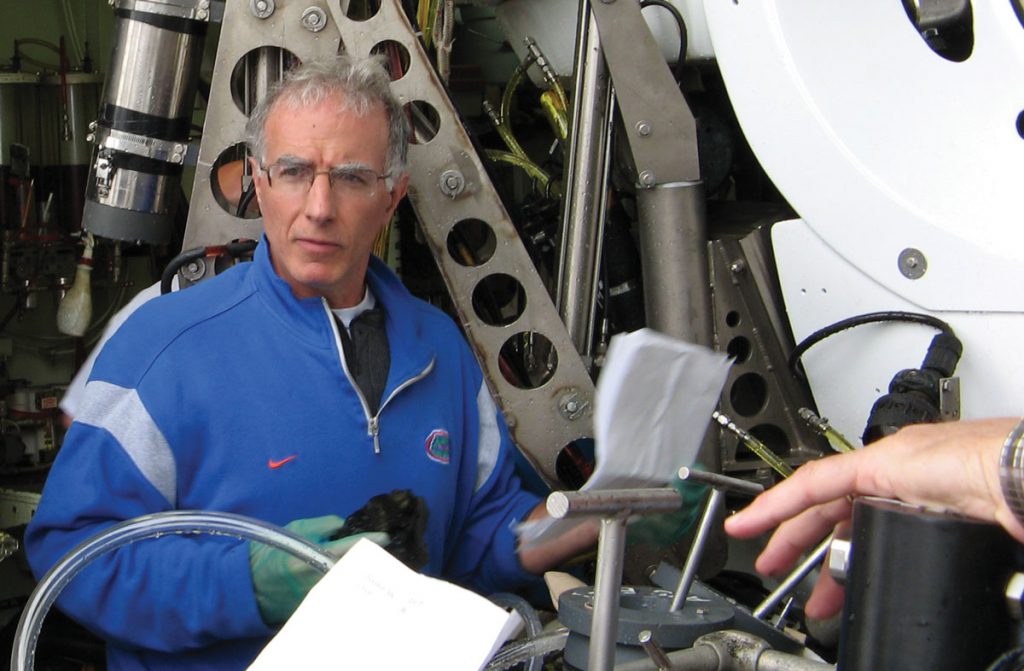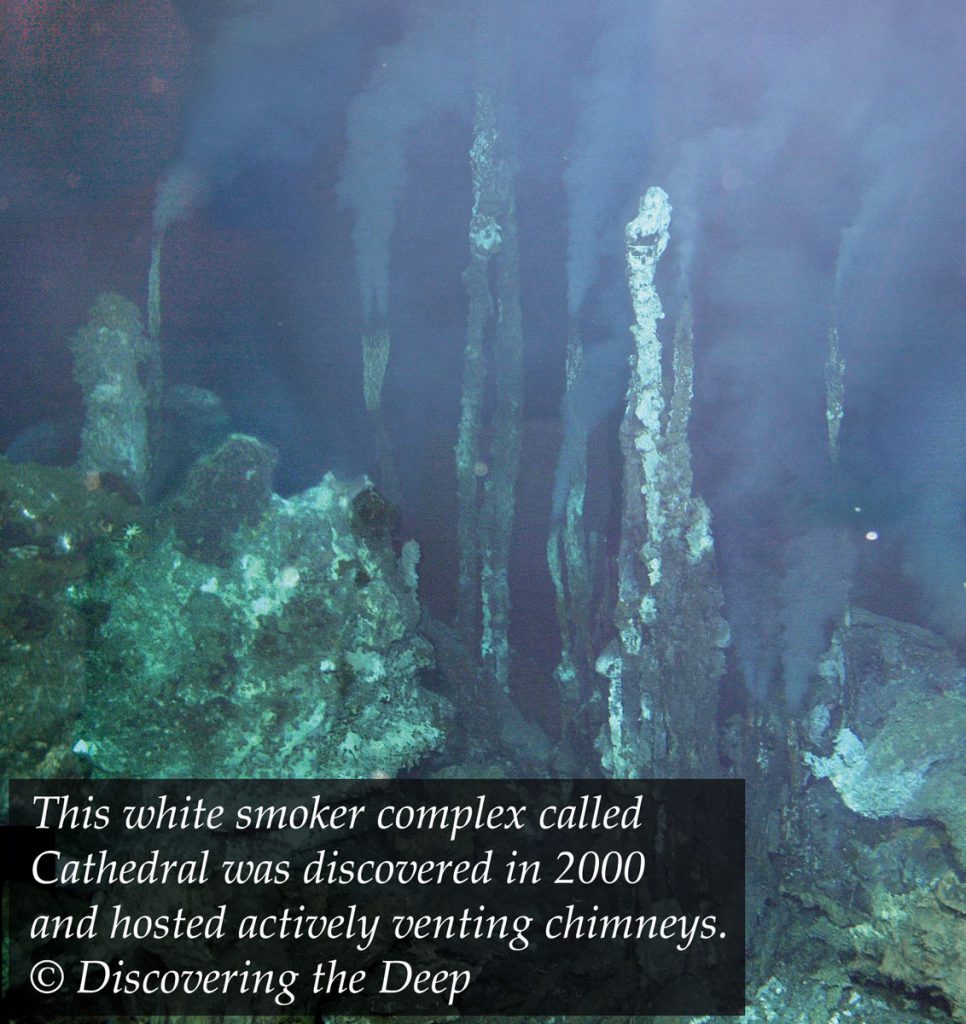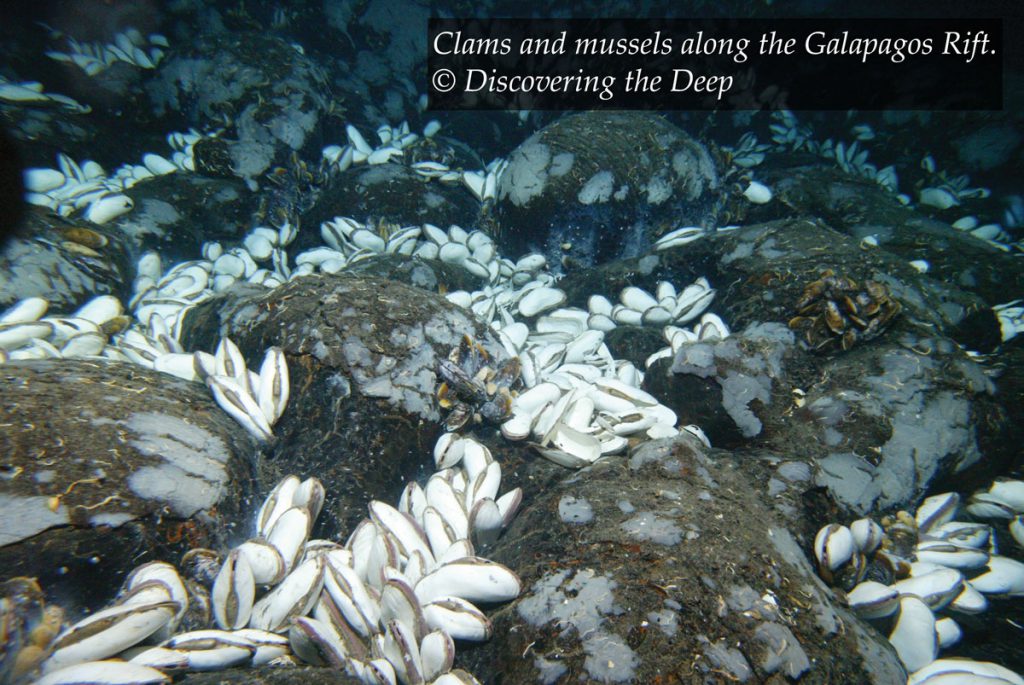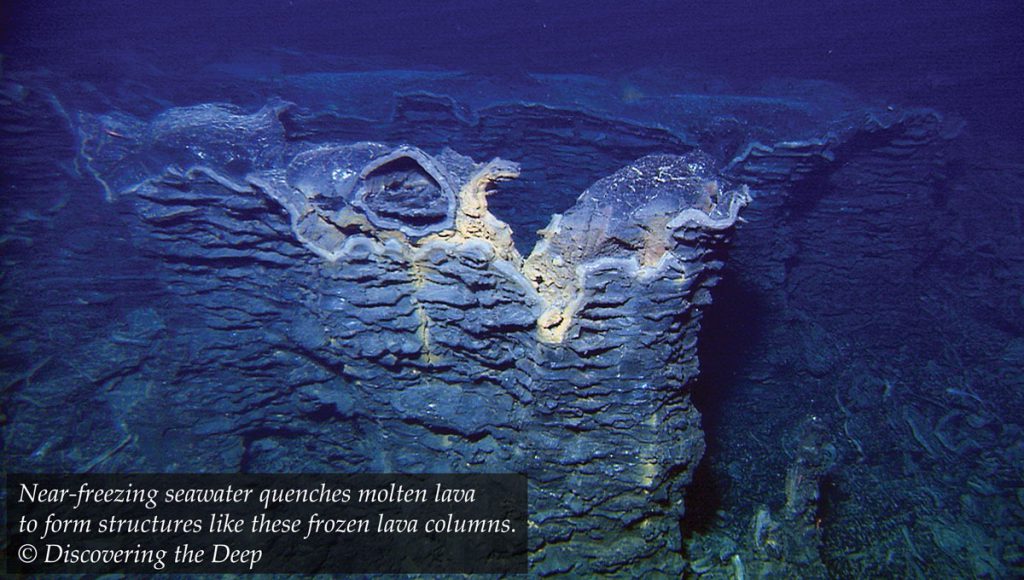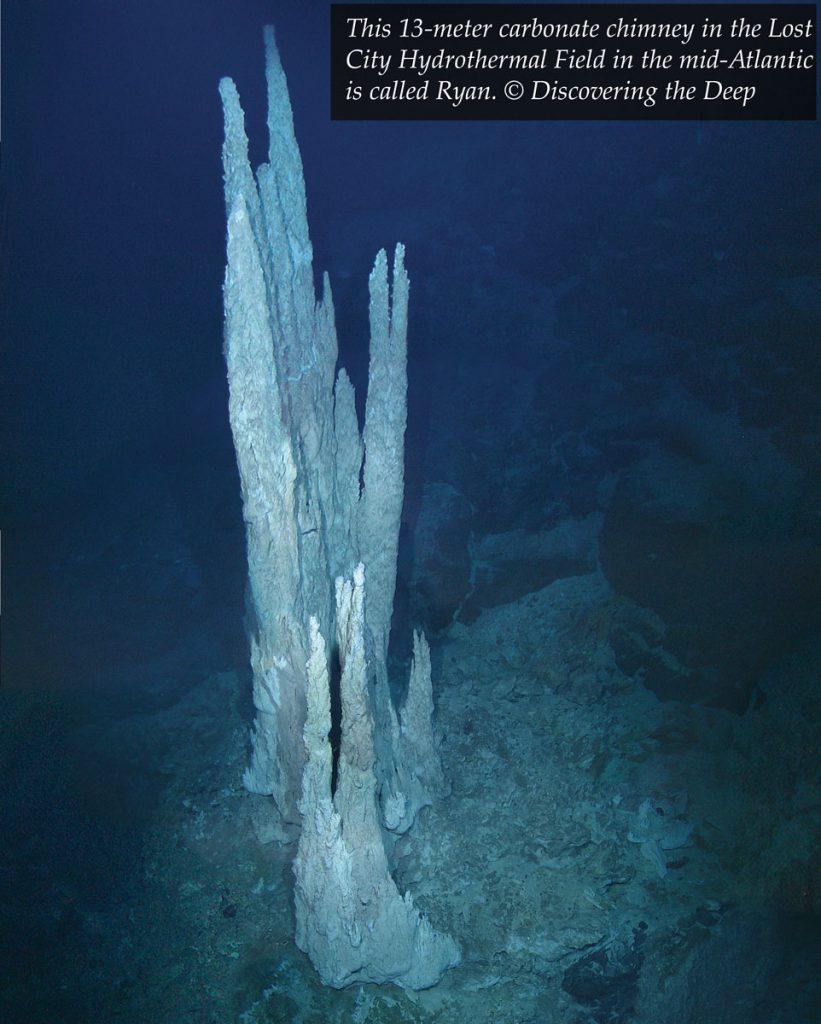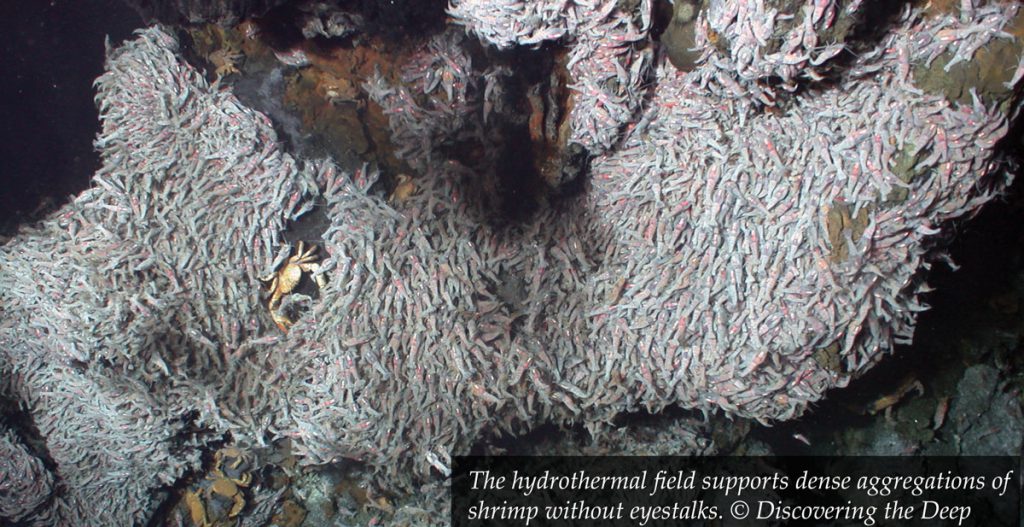University of Florida geologist Mike Perfit and four colleagues have sifted through thousands of photos from hundreds of dives over three decades to share with readers the hidden world at the bottom of the sea in “Discovering the Deep: A Photographic Atlas of the Seafloor and Ocean Crust.”
Not every scientist is cut out to spend eight hours crammed in with two other people in a 6-foot diameter sphere for a trip to the ocean floor and back. So when a rookie is set to go down, veterans put him through his paces.
In 1985, off the Galapagos Islands, that rookie was Mike Perfit, just two years into his career at the University of Florida.
The veterans placed Perfit in Alvin, the submersible, and plied him with horror stories of what could go wrong. Dives cannot be rescheduled, so panic at 8,000 feet is costly, and they wanted to see if he would freak out.
He did not.
As Alvin began the one- to two-hour descent, light faded, and at about 600 feet, the world outside his window turned black except for the twinkling of bioluminescent creatures, reminding him of stars in space.
Their rendezvous with the bottom approaching, the pilot turned on the lights.
Perfit remembers pillow lavas coming into view out of a “gray blueness,” then the realization that he was at the bottom of the ocean.
“Here was this silent world that just went on and on, lavas all over the place. This is the seafloor, this is where spreading takes place. We were definitely in a rift zone,” Perfit says. “Things I had studied for years, now I was actually seeing them.”
More than 35 dives later, Perfit says seeing sights few others ever see still inspires wonder.
“I love the fact that I’m in this environment where nobody’s ever been,” Perfit says. “I get to see things people might never see again.”
Related Website:
This article was originally featured in the Fall 2015 issue of Explore Magazine.


